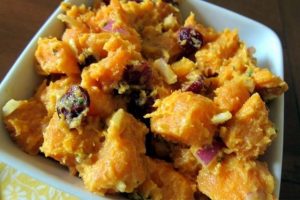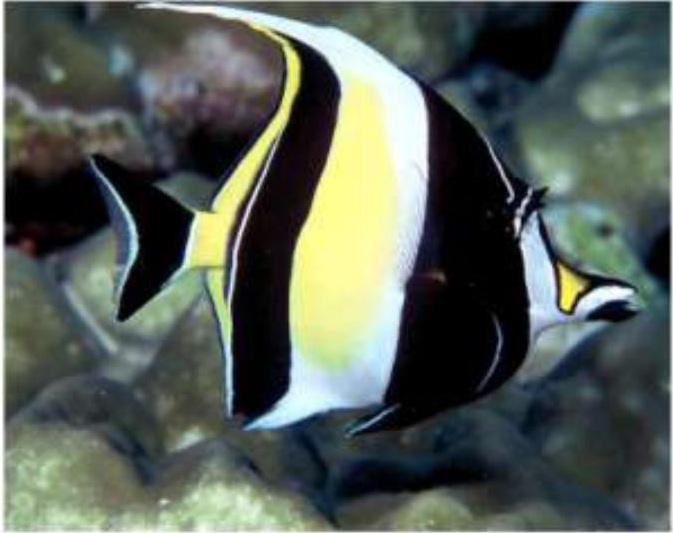By Terry Sovil from the October 2013 Edition
 My good friend Carlos and I were in Centro Manzanillo visiting “city hall”. It is late morning and lunch sounds good. We pop into a busy local restaurant. Part of the meal is potato salad. Potato? Is that Mexican?
My good friend Carlos and I were in Centro Manzanillo visiting “city hall”. It is late morning and lunch sounds good. We pop into a busy local restaurant. Part of the meal is potato salad. Potato? Is that Mexican?
Back in Minnesota, United States, we had a restaurant called “Taco Johns”. They served potatoes with their meals, what they call “West-Mex” style food. I thought it was because it was Minnesota and the midwest thing to do. Something the locals could relate to eating in a “Mexican Restaurant”. Where tacos don’t look like the tacos here and ketchup can be too spicy for many. They called them Potato Olés® which would be pronounced “OH LAY”. Well, Minnesota is also the land of the Scandinavians so I used to laugh and say “OH LEE” because we had a lot of Sven and Ole jokes about.
Putting on my serious face I asked Carlos “Is this a normal Mexican side dish? Potato salad?” He assured me it was.
How could this be? The potato came to North America via the Europeans that brought it over. Right? Remember the Irish Potato Famine? My guess was that potatoes must have migrated down with donuts, smoothies, Dairy Queen and Snickers bars.
Then I got curious. How exactly did the potato come to be in Mexico? The answer was simple. The potato came from Peru and Chile. What? True. All my life I had thought the potato came from Europe with the settlers. And it did. The Europeans, Spanish, brought it back from the Americas and introduced it to the Europeans.
In ancient ruins in Peru and Chile, archaeologists have found potato artifacts and remains that date to 500 B.C. The Incas ate them and cultivated them. They buried them with their dead. They hid them in concealed bins in case of a war or famine. They dried them and carried them on long journeys. They called them “papas”, sound familiar?
They even had a prayer for them:
“O Creator! Thou who givest life to all things and hast made men that they may live, and multiply. Multiply also the fruits of the earth, the potatoes and other food that thou hast made, that men may not suffer from hunger and misery.”
So the Spanish found them when they first arrived in Peru in 1532. They wrote extensively about the potato and how it was used to support Inca existence. They brought them back to Spain.
The Spanish thought they were a kind of truffle and called them “tartuffo”. They noticed that sailors that ate papas didn’t get scurvy. The potato went to Italy and England about 1585, to Belgium and Germany by 1587, to Austria about 1588 and to France about 1600. And just like so many things in our cultures today it was often regarded as weird, poisonous and evil. It destroyed the soil it grew in; it caused leprosy, syphilis, early death, sterility and rampant sexuality. Probably all at the same time.
There is an Irish legend that ships of the Spanish Armada carried potatoes that washed ashore when some wrecked on the coast. It was the distinguished Sir Walter Raleigh that had brought the potato to his home near Cork, Ireland.
 The legend is that he planted them, cultivated them and then presented some to Queen Elizabeth I. All of the proper folks were invited to a big meal featuring the potato in every course. Sadly, the cooks were totally unfamiliar with this new food and they served up a hearty dish of boiled stems and leaves, poisonous, tossing out the lumpy tuber. It made everyone deathly ill so potatoes were banned.
The legend is that he planted them, cultivated them and then presented some to Queen Elizabeth I. All of the proper folks were invited to a big meal featuring the potato in every course. Sadly, the cooks were totally unfamiliar with this new food and they served up a hearty dish of boiled stems and leaves, poisonous, tossing out the lumpy tuber. It made everyone deathly ill so potatoes were banned.
Eventually potatoes were brought to the United States in the 1600’s but were not widely grown. Then Scotch-Irish immigrants started to grow them in 1719. It was in 1845-1849 that the “Great Famine” or “Great Starvation” in Ireland was caused by a disease in the potato crop. The average diet of a “global citizen” in the first decade of the 21st century is about 33kg (73 lb) of potato. It remains an essential crop in Europe where production is some of the highest in the world. Rapid expansion has also occurred in southern and eastern Asia. China is now the world’s largest producers and nearly a third of the world’s potatoes are grown in China and India.
 So what about potato salad? Just like the potato the adaptations came about from geography and cultures. Printed evidence of American texts around 1875 contained a French, British and German recipe. The German version included bacon and was served warm!
So what about potato salad? Just like the potato the adaptations came about from geography and cultures. Printed evidence of American texts around 1875 contained a French, British and German recipe. The German version included bacon and was served warm!
Download the full edition or view it online
—
Terry is a founding partner and scuba instructor for Aquatic Sports and Adventures (Deportes y Aventuras Acuáticas) in Manzanillo. A PADI (Professional Association of Dive Instructors) Master Instructor in his 36th year as a PADI Professional. He also holds 15 Specialty Instructor Course ratings. Terry held a US Coast Guard 50-Ton Masters (Captain’s) License. In his past corporate life, he worked in computers from 1973 to 2005 from a computer operator to a project manager for companies including GE Capital Fleet Services and Target. From 2005 to 2008, he developed and oversaw delivery of training to Target’s Loss Prevention (Asset Protection) employees on the West Coast, USA. He led a network of 80+ instructors, evaluated training, performed needs assessments and gathered feedback on the delivery of training, conducted training in Crisis Leadership and Non-Violent Crisis Intervention to Target executives. Independently, he has taught hundreds of hours of skills-based training in American Red Cross CPR, First Aid, SCUBA and sailing and managed a staff of Project Managers at LogicBay in the production of multi-media training and web sites in a fast-paced environment of artists, instructional designers, writers and developers, creating a variety of interactive training and support products for Fortune 1000 companies.





You must be logged in to post a comment.